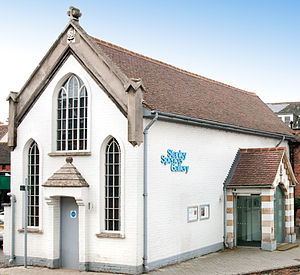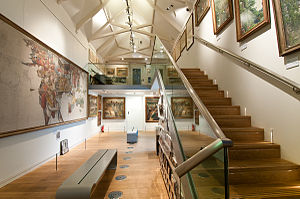
Jan Josephszoon van Goyen was a Dutch landscape painter. The scope of his landscape subjects was very broad as he painted forest landscapesm marines, river landscapes, beach scenes, winter landscape, cityscapes, architectural views and landscapes with peasants. The list of painters he influenced is much longer. He was an extremely prolific artist who left approximately twelve hundred paintings and more than one thousand drawings.

André Derain was a French artist, painter, sculptor and co-founder of Fauvism with Henri Matisse.
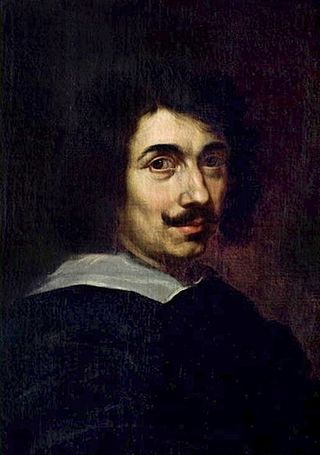
Claude Lorrain was a French painter, draughtsman and etcher of the Baroque era. He spent most of his life in Italy, and is one of the earliest important artists, apart from his contemporaries in Dutch Golden Age painting, to concentrate on landscape painting. His landscapes are usually turned into the more prestigious genre of history paintings by the addition of a few small figures, typically representing a scene from the Bible or classical mythology.

Annibale Carracci was an Italian painter and instructor, active in Bologna and later in Rome. Along with his brother and cousin, Annibale was one of the progenitors, if not founders of a leading strand of the Baroque style, borrowing from styles from both north and south of their native city, and aspiring for a return to classical monumentality, but adding a more vital dynamism. Painters working under Annibale at the gallery of the Palazzo Farnese would be highly influential in Roman painting for decades.

George Stubbs was an English painter, best known for his paintings of horses. Self-trained, Stubbs learnt his skills independently from other great artists of the 18th century such as Reynolds or Gainsborough. Stubbs' output includes history paintings, but his greatest skill was in painting animals, perhaps influenced by his love and study of anatomy. His series of paintings on the theme of a lion attacking a horse are early and significant examples of the Romantic movement that emerged in the late 18th century. His painting, Whistlejacket hangs in the National Gallery, London.

Benjamin Lauder Nicholson, OM was an English painter of abstract compositions, landscape and still-life.
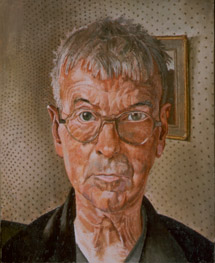
Sir Stanley Spencer, CBE RA was an English painter. Shortly after leaving the Slade School of Art, Spencer became well known for his paintings depicting Biblical scenes occurring as if in Cookham, the small village beside the River Thames where he was born and spent much of his life. Spencer referred to Cookham as "a village in Heaven" and in his biblical scenes, fellow-villagers are shown as their Gospel counterparts. Spencer was skilled at organising multi-figure compositions such as in his large paintings for the Sandham Memorial Chapel and the Shipbuilding on the Clyde series, the former being a First World War memorial while the latter was a commission for the War Artists' Advisory Committee during the Second World War.
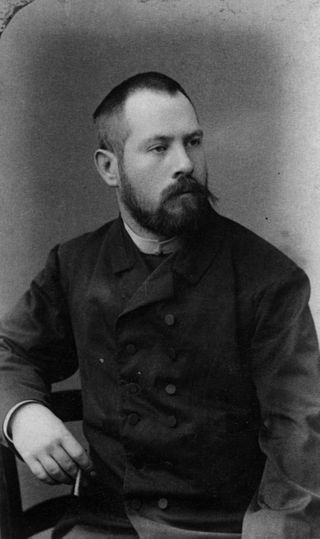
Lovis Corinth was a German artist and writer whose mature work as a painter and printmaker realized a synthesis of impressionism and expressionism.
Allen Jones is a British pop artist best known for his paintings, sculptures, and lithography. He was awarded the Prix des Jeunes Artistes at the 1963 Paris Biennale. He is a Senior Academician at the Royal Academy of Arts. In 2017 he returned to his home town to receive the award Honorary Doctor of Arts from Southampton Solent University

Cookham is a historic Thames-side village and civil parish on the north-eastern edge of Berkshire, England, 2.9 miles (5 km) north-north-east of Maidenhead and opposite the village of Bourne End. Cookham forms the southernmost and most rural part of the High Wycombe urban area. With adjoining Cookham Rise and Cookham Dean, it had a combined population of 5,779 at the 2011 Census. In 2011, The Daily Telegraph deemed Cookham Britain's second richest village.

Ellsworth Kelly was an American painter, sculptor, and printmaker associated with hard-edge painting, Color Field painting and minimalism. His works demonstrate unassuming techniques emphasizing line, color and form, similar to the work of John McLaughlin and Kenneth Noland. Kelly often employed bright colors. He lived and worked in Spencertown, New York.

Ilka Gedő was a Hungarian painter and graphic artist. Her work survives decades of persecution and repression, first by the semi-fascist regime of the 1930s and 1940s and then, after a brief interval of relative freedom between 1945 and 1949, by the communist regime of the 1950s to 1989. In the first stage of her career, which came to an end in 1949, she created a huge number of drawings that can be divided into various series. From 1964 on, she resumed her artistic activities creating oil paintings. "Ilka Gedő is one of the solitary masters of Hungarian art. She is bound to neither the avant-garde nor traditional trends. Her matchless creative method makes it impossible to compare her with other artists."

James Sidney Edouard, Baron Ensor was a Belgian painter and printmaker, an important influence on expressionism and surrealism who lived in Ostend for most of his life. He was associated with the artistic group Les XX.
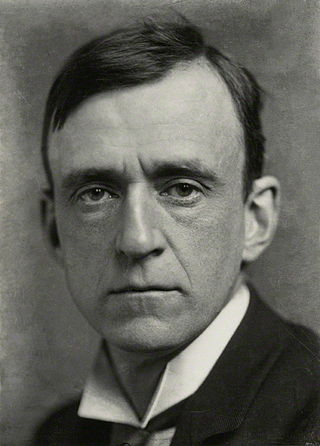
Henry Tonks, FRCS was a British surgeon and later draughtsman and painter of figure subjects, chiefly interiors, and a caricaturist. He became an influential art teacher.

Gilbert Spencer was a British painter of landscapes, portraits, figure compositions and mural decorations. He worked in oils and watercolour. He was the younger brother of the painter Stanley Spencer.
Fyffe William George Christie was a British figurative artist and mural painter. He served in the British Army during World War II as a bagpiper and stretcher bearer. He began painting during the war and attended the Glasgow School of Art from 1946 to 1951. After graduating, he began painting murals, including Christ Feeding the People (1950-1951) and various others in Glasgow, including one in the Glasgow University Union. Christie then moved to London, where he taught at various schools and continued painting.
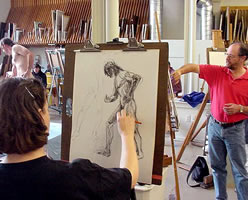
Jerry Weiss is an American figurative, landscape, and portrait painter and a writer. He studied classical drawing, and his career has centered on both the figure, and landscape. He says he is "intrigued by the portrait and figure as a most sacred subject."
Double Nude Portrait: The Artist and his Second Wife 1937 is an oil on canvas painting by British artist Stanley Spencer. It depicts Spencer and his soon-to-be second wife, Patricia Preece, beside a raw leg of lamb. The painting is sexually charged: Spencer's second wife was a lesbian in a long-term relationship when they married, and their marriage was never consummated. The painting is held by the Tate Gallery, which describes it as "probably now Spencer's most famous picture".

Hilda Anne Carline (1889–1950) was a British painter, daughter of the artist George Francis Carline, and first wife of the artist Stanley Spencer. She studied art under the Post-Impressionist Percyval Tudor-Hart, with her brothers Sydney and Richard, and then at the Slade School of Art under Henry Tonks. She had a promising early start with her works being shown at the London Group, Royal Academy and New English Art Club.
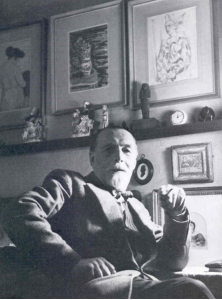
Clifford Hall, ROI,NS, was a British painter of street scenes and bohemian life. One of his more recognizable post-war phases was that of people covered to various degrees by a towel or blanket. Some have their faces turned from the viewer or hidden.
